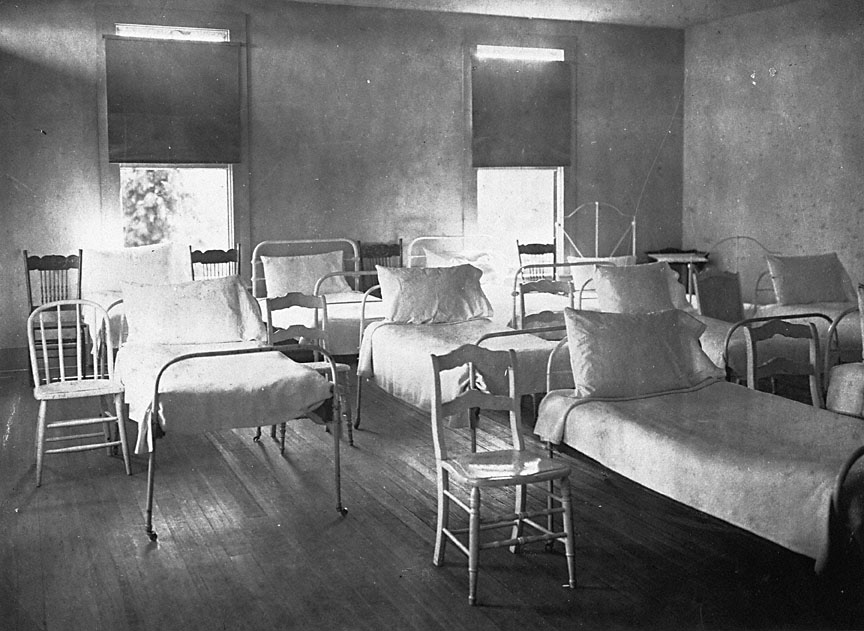- Catalog No. —
- CN 024552
- Date —
- circa 1884
- Era —
- 1881-1920 (Industrialization and Progressive Reform)
- Themes —
- Geography and Places, Women
- Credits —
- Oregon Historical Society
- Regions —
- Portland Metropolitan
- Author —
- Unknown
Children's Home Dormitory
This photograph depicts an interior view of the Ladies’ Relief Society’s Children’s Home, a dormitory for impoverished and orphaned children. This institution, located in South Portland at 887 Corbett Street, opened on November 22, 1884 to replace the Society’s overcrowded home at the corner of F (today’s NW Flanders) and 14th streets.
The Ladies’ Relief Society first organized 1867 to “relieve want and destitution where need demands.” Its earliest members met immigrant wagon trains with food and supplies and conducted other acts of charity. In 1871, with a group of male allies, the Society formed a corporation called “The Home” and opened a shelter. Its first residents included destitute mothers—some single and pregnant—and their children.
Within a few decades the Society admitted impoverished children only, choosing to specialize in children who had at least one living parent—often working, single mothers who found it impossible to provide for their family. Parents came to the institution voluntarily, and when the all-female advisory committee deemed them “deserving,” it admitted the children for a small monthly fee.
Parents determined their children’s length of stay at the institution, which ranged from a few months to multiple years. As this photograph shows, the children slept on rolling beds, ten to a room. They ate meals while sitting on benches at long tables in a central dining hall. The institution often ran at maximum capacity, between 90 and 100 children.
The Home underwent important administrative changes in the 1920s. First, to more clearly represent its work, the corporation officially changed its name to the “Children’s Home.” Second, the male trustees agreed to resign and leave full legal and practical operation of the organization to women. Finally, it undertook its third and final move to a farm on Powell Boulevard.
The new home operated much differently than the Society’s previous homes. Rather than an institutionalized setting that stressed efficiency, the new facility consisted of two (later three) smaller cottages headed by “house mothers” who strove to meet the children’s physical and emotional needs. Children shared bedrooms with no more than three others, and siblings always shared the same cottage. By giving their facility the look and feel of an “attractive, private home,” the leaders of the organization attempted to run the establishment in keeping with a developing national standard of care—largely influenced by a growing body of professional social workers—which placed a premium on the family unit as the most appropriate place for the care of children.
Further Reading:
Slingerland, William Henry for the Oregon Child Welfare Commission. Child Welfare Work in Oregon: A Study of Public and Private Agencies and Institutions for the Care of Dependent, Delinquent and Defective Children. Eugene, Oreg., 1918.
Written by Sara Paulson, © Oregon Historical Society, 2006.
